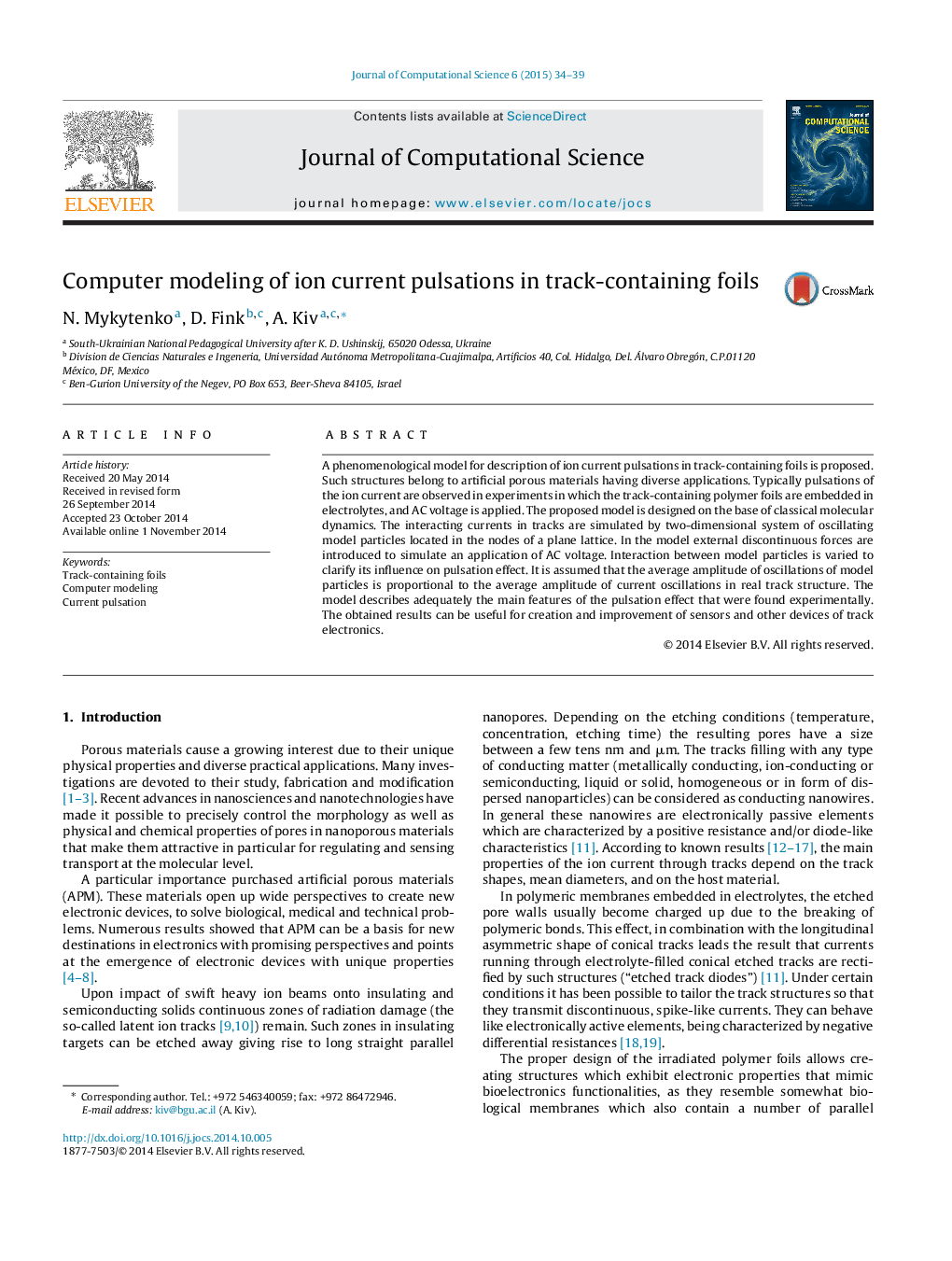| Article ID | Journal | Published Year | Pages | File Type |
|---|---|---|---|---|
| 429349 | Journal of Computational Science | 2015 | 6 Pages |
•Track structures are widely used in electronics, biology, medicine, etc. They are usually studied using complex mathematical approaches. In our work, by using a simple computer model based on classical molecular dynamics the features of the mechanism of passage of electrolytes in track structures is elucidated.•A computer experiment with the developed model showed that this model reflects the main features of the ion current spikes in track structures that were measured.•It is shown that taking into account only one factor (the interaction of currents in the system of tracks) leads to the result of an emergence of current spikes.•The obtained results could be useful for creation and improvement of biosensors and other devices of track electronics.
A phenomenological model for description of ion current pulsations in track-containing foils is proposed. Such structures belong to artificial porous materials having diverse applications. Typically pulsations of the ion current are observed in experiments in which the track-containing polymer foils are embedded in electrolytes, and AC voltage is applied. The proposed model is designed on the base of classical molecular dynamics. The interacting currents in tracks are simulated by two-dimensional system of oscillating model particles located in the nodes of a plane lattice. In the model external discontinuous forces are introduced to simulate an application of AC voltage. Interaction between model particles is varied to clarify its influence on pulsation effect. It is assumed that the average amplitude of oscillations of model particles is proportional to the average amplitude of current oscillations in real track structure. The model describes adequately the main features of the pulsation effect that were found experimentally. The obtained results can be useful for creation and improvement of sensors and other devices of track electronics.
